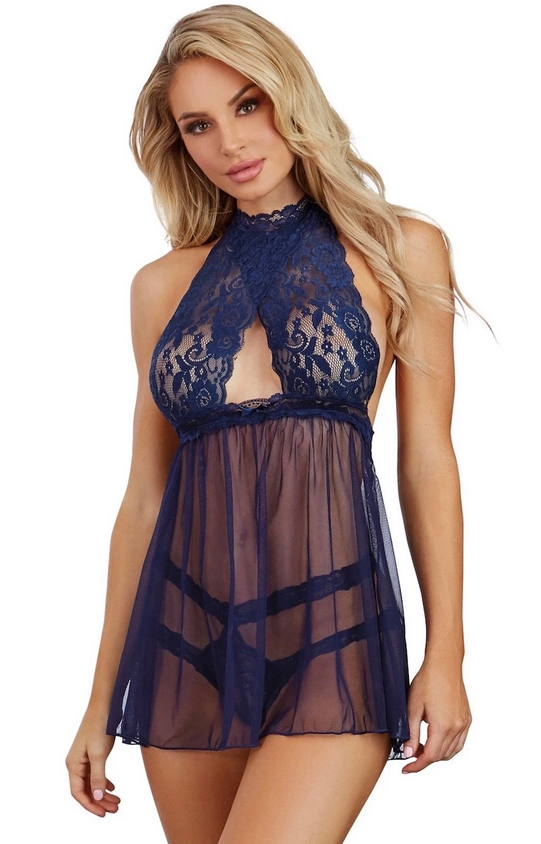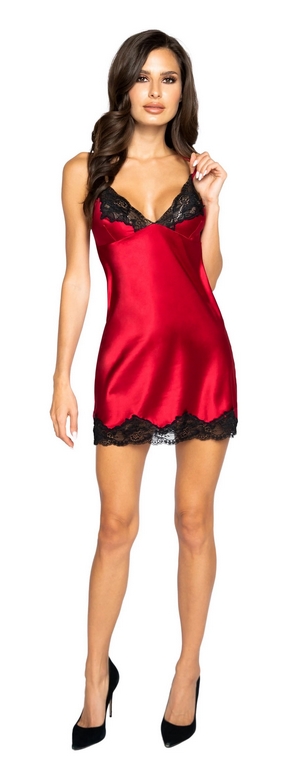Disclosure: This post may contain affiliate links. I receive a small commission at no cost to you when you make a purchase using my link.
Donning a luscious piece of lingerie is one of the private ways that a woman can express herself. It’s why they call it ‘Victoria’s Secret.’ It’s like having a delicious inside joke, and just the right gossamer garment can help your confidence shine through in a very je ne sais quois way.
There’s a style and cut of lingerie for everyone, but today we’ll cover the eternal and elegant chemise.
In this article, we’ve prepared a comprehensive guide to the chemise. We’ll take you through the rich history of the chemise, discuss how it differs from the iconic babydoll, and how to wear it.
What Is A Chemise?
A modern chemise is a delicate loose-fitting garment that is typically sleeveless and slightly revealing while also leaving something to the imagination.
A chemise can be any length and is often unfitted and loose at the waist, follows the body’s form closely, and will drop straight from the shoulders. Interestingly, a chemise style piece of lingerie will have almost no buttons, fasteners, or other adornments.
Imagine a chemise as rather a maiden in the moonlight sort of vibe. Soft, elegant, and utterly timeless.
A Brief History

The chemise concept originated during the Roman era into the Middle Ages, where men and women alike would don a basic cotton garment to wear under their clothing. Men would pair it with doublets, trousers, and coats, while women would wear it under gowns.
This garment served to protect their clothing from sweat and oil, as taking dirty, heavy clothing like gowns and heavy trousers to the laundromat wasn’t an option in the Renaissance. It was easier instead to have multiple simple, lightweight chemises and wash those as frequently as possible.
A further need for the chemise was the lack of bathing that went on during medieval times. Contrary to popular belief, personal hygiene and washing up were considered important in medieval times, but this was mainly to help stave off the plague and other illnesses rather than not smelling like trash.
However, bathing wasn’t always accessible, especially for lower-class citizens. If you were aristocratic or well off, you’d have a maid to fill your basin, heat the water, and take the sopping wet linen towels and dirty basin away to dump and rinse. For common folk, washing up often was an hours-long process that many did not have the inclination to do or the resources for.
So, as a way to mitigate smelling rather ripe, laundering one’s many chemises was a regular chore. The solution used for washing clothing was normally river water and lye, among others. Not exactly appealing to wash your body in.
As the centuries turned, the chemise continued to function as underwear only. It wasn’t until style icon Marie Antoinette (just forget the cake bit for a minute, okay?) started donning delicate chemise-style gowns that the garment was considered to be a piece of stylish outerwear.
The Chemise vs. The Babydoll: What’s The Difference?
First, some background on babydoll lingerie:
Babydolls came into prominence in the early 1940s from designer Sylvia Pedlar. She designed them as shortened nightgowns due to a fabric shortage during the Second World War. Carroll Baker later iconized the babydoll in the movie Baby Doll during the late 1950s.

The babydoll morphed from sassy pajamas to a fashion statement from the 1980s to the 1990s, when the ‘kinderwhore’ vibe was popularized by notable female punk-rock bands such as riot Grrl and eccentric performers like Courtney Love. The style was meant ironically and as a feminist movement in many cases; a sort of turn up against traditional femininity – particularly in the punk-rock scene.
It’s taken a rather more elegant turn, as most things did after the 1990s, and become a popular choice for delicate and sexy bridal lingerie, often being paired with panties and sold as a set.
Now, for how they differ:
The primary difference between the babydoll and the chemise is the waistline. Instead of having a straight drop-down, almost fitted style like the chemise, the babydoll is fitted at the waist, sometimes with cups for cleavage. The fabric flows out from that waist to accentuate the thighs, elongate the legs, and is usually very short in contrast to the chemise, which can be any length.
Additionally, babydolls feature whimsical additions like fur, fasteners, lace, bows, and other appliques where the chemise does not.

It’s important to note that chemise lingerie as a whole is a tad bit more glamorous and elegant, while the babydoll offers a sexy yet innocent vibe.
Best Fabrics For Chemise Lingerie
Piggybacking on the differences between babydolls and the chemise briefly, we’ll note that babydolls are typically made of sheer fabric like nylon, silk, and chiffon. In contrast, the chemise is usually composed of cotton, rayon, satin, and anything in between.
What fabric works best for you depends on your personal preference. Many comfortable pieces of chemise lingerie will be made of satin, linen, or cotton – perfect if you live somewhere with hot days and warm nights.
How To Wear Chemise Lingerie
Lingerie is for you, and you alone can decide how you want to wear it! But, here are some tips:
- Long day at the office? Wear a satin slip chemise to ensure your dress or skirt hits all the right places. Swish that skirt and walk with confidence, girl.
- Pick up a cotton chemise for lounging around the house while still offering up a sexy silhouette.
- Feeling spicy? Pair a chemise with sheer black tights, thigh-high boots, and a camel coat. You’ll turn heads wherever you plan to take that dangerous outfit.
What Body Types Are Best Suited For The Chemise?
Because the chemise is loose, breezy, and typically not form-fitting – it suits any body type. Always check the sizing guide if you’re shopping online, or be sure to try the garment on if you’re in-store!
Of course, we’d like to pair that with a disclaimer that any woman can wear whatever she feels confident and sexy in – especially a piece of lingerie as effortless and timeless as the chemise.




I love this topic of Chemises! Your article makes me want to go out and buy one. Even though I don’t have a boyfriend to come home to, you are reminding me that I can dress up in lingerie just because. My routine at night is that I shower or bath with my favorite bubble bath or bath shower gel, dry off, put my favorite lotion all over my body. But then I put on flannel top and bottom. Not sexy at all. I’m going to buy myself a chemise as a treat to myself.
This is the type of question that it is so hard to get an answer to on the internet because I have But honestly, you have given me what I have been looking for! It’s actually been a while that I’ve been searching for the answer for this and it is evident that you have really taken the time to put all the useful info on this, thank you for writing this out. May the force be with you
Thank you for enriching my knowledge on this. Though admittantly, I have seen this before on people but I have never known the name. I only got to read this from the topic interest and surely,it is an interesting one to see here too. Thank you so much for sharing here and I honestly value the overview here too. Thumbs up to you for sharing here
This is one very engaging article and I’m pleased with how you have started the topic by giving use a clear insights to the origin of this chemise and that is really nice. I love the evolution with these things and how the producers have been able to make these chemise more attractive to us all. So many people are unaware of what this really originated from. Cheers